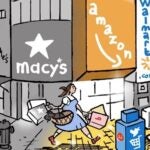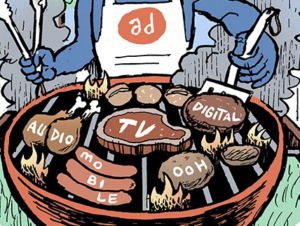This is the fourth in AdExchanger’s “Meet the CDPs” series. Read previous interviews with mParticle, Acquia-owned AgilOne, Amperity, ActionIQ, Lytics, Bluecore, Microsoft, Tealium, Optimove, Adobe, Treasure Data and BlueConic.
One silver lining of working from home is being able to see everyone’s kids on Zoom, said Peter Reinhardt, CEO and co-founder of customer data platform Segment.
The parenting channel on Segment’s Slack is particularly active right now as employees attempt to manage the “work” and “home” components of their new WFH lives.
Customers also have questions about adjusting to the new normal.
“They’re definitely doing some gut checking,” Reinhardt said. “We’re getting questions like, do you have a business continuity plan in place? Do you have a clear understanding about how all of this impacts my specific business? Do you have a healthy cash balance? Thankfully we can answer them in the affirmative.”
Segment’s customer base includes B2B, B2C, DTC, Fortune 500 companies; basically any company that’s trying to scale their digital efforts, Reinhardt said.
Clients include Instacart, HotelTonight, Fox, Gap, Meredith, Peloton, IBM and Google. Segment’s headcount is just under 600 people spread across seven global offices. Roughly 30% are engineers.
Reinhardt spoke with AdExchanger from his home office.
AdExchanger: What’s going on with your customers right now in light of the coronavirus situation?
PETER REINHARDT: We have some customers whose usage is exploding and some that are drastically impacted because they’re in the physical events business. Overall, our volumes are up pretty substantially, which is what you’d expect when people are consuming a lot of digital services.
In the sales pipeline and marketing funnel, though, it’s total chaos. Some things are speeding up, others are slowing down – it’s all over the place, and there’s no discernible pattern yet. A lot of small fires to put out.
What kind of small fires?
For example, people are consuming huge amounts of delivered food and we have customers with food delivery apps. Usage has grown massively over the last few weeks, and we’re trying to figure out how to best support them and make sure that their data is flowing well.
What is Segment’s differentiator?
We are particularly focused on helping companies have good data. By that I mean getting solid customer records that are complete, consistent and compliant with governance in place. Some companies in the space have focused on helping people orchestrate the customer journey or on campaign activation, but we see our real differentiator as providing a good data foundation first.
What data sources do you commonly connect?
We connect to more than 40 different sources and 300 destinations out of the box. It’s roughly one-third web data, one-third mobile server side and one-third cloud sources. It’s quite broad.
Will the marketing clouds deliver on their promise of providing CDPs?
Everything I’ve heard from folks inside and from customers is that they’re all a solid year, year and a half away from having anything like a real product. I know one cloud only has around five integrations. That is not a real CDP. But they do see this as hugely strategic and even existential. I saw a job posting from one of the marketing clouds recently that said, “CDP is the future of CRM.”
Who are your biggest competitors?
The clouds will become competitors eventually, maybe in two or three years. We don’t see them in any deals today. Our real competitor comes in the form of internal builds at potential clients where the CTO or the VP of engineering has an existing system they put in place by stitching together pieces of code for data distribution into some sort of custom configuration. That is what we’re competing with in 80% of deals.
After that, it’s a mix of older technologies, mainly on the tag management side, but I’d say we see them in 5% of deals or less.
How long does it take to onboard a new customer?
It varies massively. A small startup, say, with a founding team of less than 20, can sign up and set up the same day. Other large companies can take a year or more. A global rollout to all of the web properties for a Fortune 100 company can take two years, because it actually entails doing thousands of implementations. They also have tighter constraints around data quality, compliance and governance. The level of complexity explodes with a global rollout.
Remember cookies? That was the top-of-mind topic before the coronavirus. Will the end of third-party cookies have an impact on the CDP space?
We strongly support the use of first-party data and we’re pretty opposed to third-party data. In fact, we have an ongoing effort to try and help folks in Sacramento and DC really understand the difference.
It depends on the CDP player and what they’re invested in, but for us there will be zero impact when third-party cookies go away. We’re looking forward to the browsers finding a way to restrict or fully get rid of third-party data flow.
You raised a $175 million Series D round last August and more than $280 million total since your Series A in 2015. What’s your growth strategy?
It’s a classic software-as-a-service growth strategy, and that takes cash upfront to go and find customers, onboard them and serve them. We’ve been lucky to have a lot of inbound customer interest over the last five years. That’s made us an efficient and exciting investor opportunity, which you can see in the size and pace of our rounds.
Are the independent CDPs doing a good enough job marketing themselves?
There’s still a lack of clarity in the CDP space right now, but that’s always true in a new category. Part of the noise has to do with the fact that there are a lot of companies labeling themselves as a CDP right now that just don’t fit the definition.
We’ll see it all get hashed out over the next six to 12 months.
This interview has been edited and condensed.















